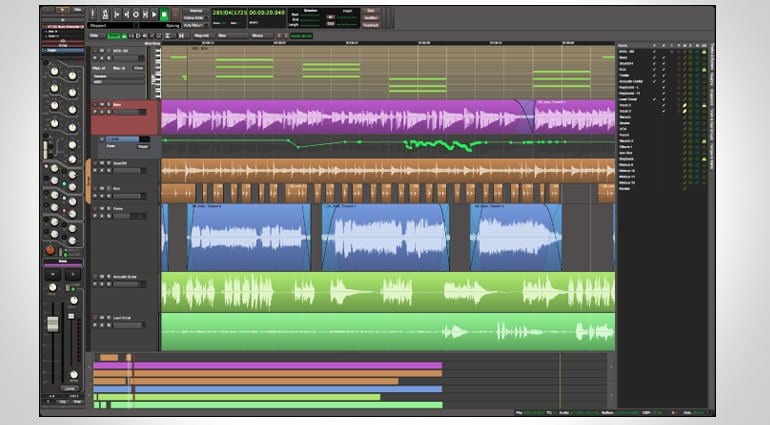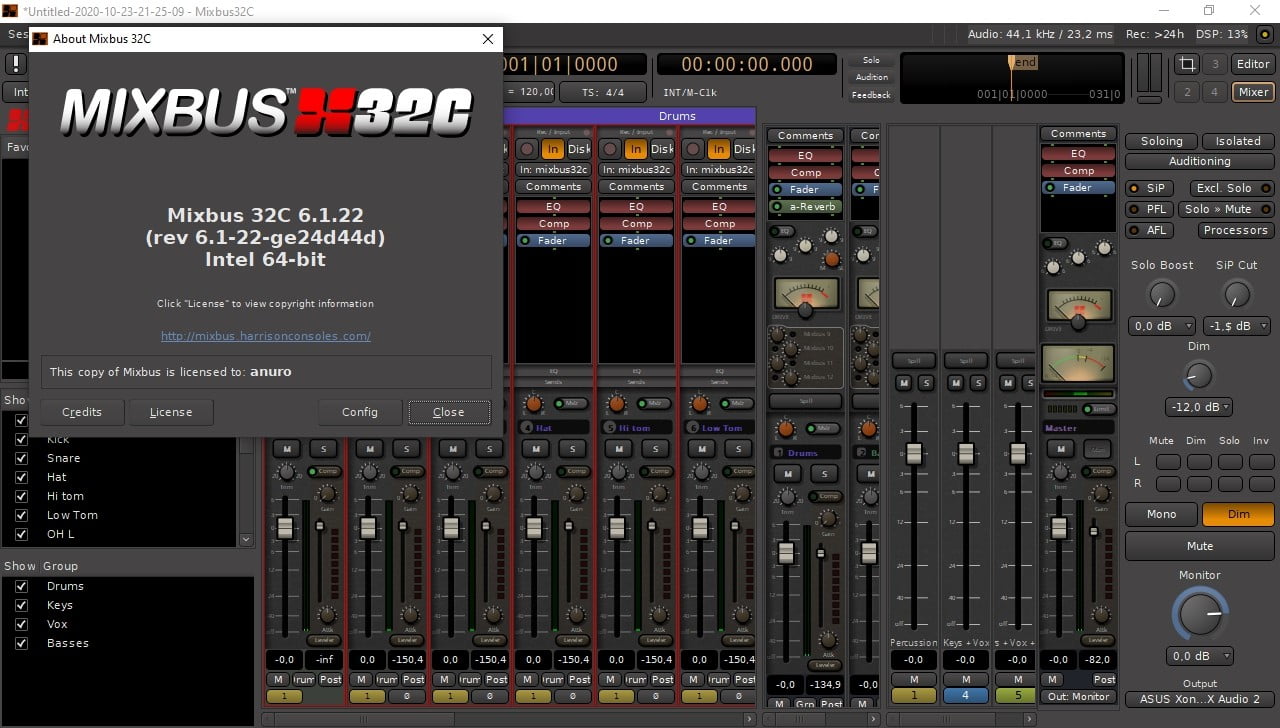
Mixbus 32c review series#
The high and low bands are shelving, while the central Bell filter emulates Harrison’s 32 Series console, with a Q that tightens up with increasing boost/cut. Given its convenience and clean sound, however, I found little reason to turn to plug-ins and instead relied on Harrison’s EQs for the bulk of a music mix.
Mixbus 32c review software#
They are not as warm as a typical analog EQ or a corresponding software model, focusing on precise carving of frequencies rather than on imparting a good deal of color. The sound of the EQ section in the channel strip is very clean.

Last, the track-based channel strips, Mixbus channel strips and the master channel all feature both pre-fader and post-fader insert points. The master bus has the same controls as the Mixbuses - minus panning - but adds a look-ahead limiter and K-Metering (engineer Bob Katz’s system focusing on averaging signal at 0dB VU while allowing 14 dB of headroom). This tape saturation serves as an overdrive function and can get pretty crunchy if cranked. Each Mixbus features simplified tone controls, panning, a compressor/limiter and a “tape saturation” control. The output to the master bus is also switchable, so a signal can feed the master, or not, while still feeding any of the auxes. Each mixer channel can selectively feed any, or all four, of the Mixbuses. The console vibe continues from there with a pre-routed signal flow. Mixbus allows access to more advanced features - such as an input trim and automation-enable controls - via a small button at the bottom of the channel strip that reveals a large window with a range of options. This differs from the plug-in workflow in the DAW world, which prompts you to instantiate a plug-in for every effect/processor needed. Each of these components can be switched in or out, allowing easy A/B comparisons.
Mixbus 32c review full#
The mixer reflects each of the tracks in the Edit window with a full channel strip, complete with a panner, HPF, 3-band semi-parametric EQ, compressor/limiter and four Mixbus assigns. This change affects both the overall appearance and the functionality.

On launching Mixbus, an Ardour user will first notice a complete redesign of the Mix window. Harrison’s engineers took the foundation of this software, but made some serious changes. This relationship was advanced through the development of Mixbus. Harrison had an existing relationship with Ardour, which helped design the software side of Harrison’s Xdubber unit. Harrison chose the Ardour workstation ( which was cross-platform (Mac/PC/Linux), had a large existing user base and offered the ability to modify the programming. Rather than building a DAW from the ground up, it seemed a better idea to take an existing infrastructure and swap out portions with newly redesigned components. The company found that running a plug-in version of its channel strip through the summing architecture exhibited in the aux buses and the main summing bus of most DAWs results in a sound that is unsatisfactory. We’ve seen quite a few offerings that represent the channel strips of different analog consoles, but up until now, a virtual Harrison has existed solely in Universal Audio’s UAD platform in the form of a modeled EQ based on Bruce Swedien’s hit-making Harrison 32C.Īccording to Harrison, the sound of its consoles runs deeper than a simple EQ or compressor. Thanks to efforts from many major plug-in manufacturers, modeling has become a very accessible way to employ the signature sounds of popular mixing consoles in DAW-based working environments.

Mixbus features many extras, including user-defined shortcuts, EQ on each channel and control surface support.


 0 kommentar(er)
0 kommentar(er)
